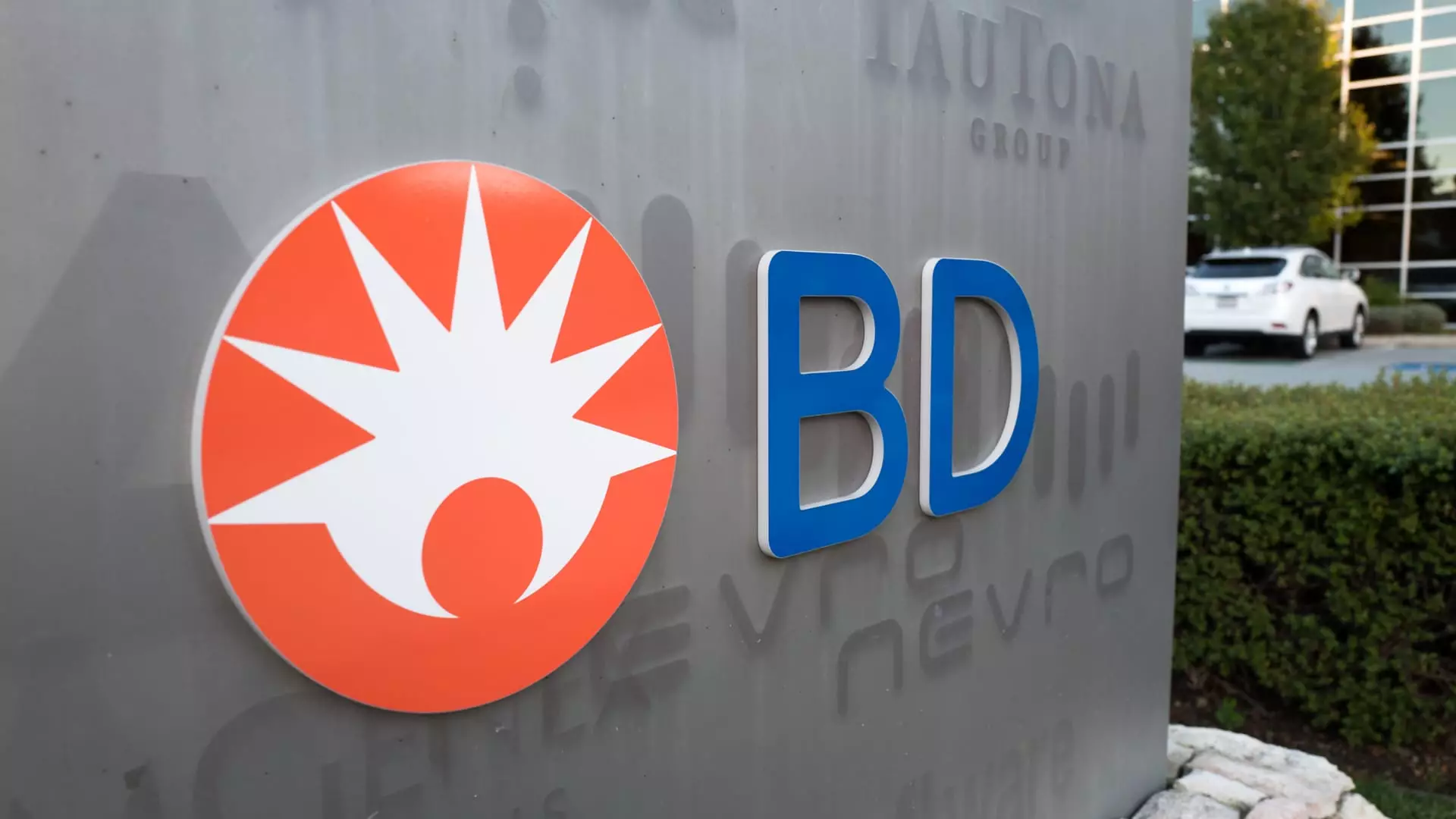Becton Dickinson (BDX), an established leader in medical technology, is currently navigating a pivotal phase characterized by increasing scrutiny from activist investors and shifting market dynamics. The company specializes in producing a wide array of medical supplies, devices, and diagnostic products for healthcare institutions and the pharmaceutical industry globally. Despite its robust stock market valuation at approximately $66.65 billion, strategic changes are imperative for maximizing shareholder value.
At its core, Becton Dickinson operates through two primary business segments: MedTech and Life Sciences. The MedTech division encompasses a variety of critical services including medication delivery systems and advanced monitoring solutions, while Life Sciences focuses on diagnostic specimen handling and infectious disease detection. Notably, the MedTech sector has demonstrated more rapid growth, contributing $15.1 billion to the company’s revenue and $6.7 billion in EBITDA, juxtaposed with Life Sciences, which reported $5.2 billion and $2 billion, respectively.
This disparity is stark, not just in revenue figures, but in growth trajectories and market perceptions. MedTech enjoys a mid-single-digit growth rate compared to the low-single-digit growth rate of Life Sciences. The market values these segments differently, assigning a valuation multiple of approximately 13 to 14 times EBITDA for MedTech, while Life Sciences garners multiples exceeding 20 times. This valuation discrepancy raises questions about the rationale of keeping these distinct businesses under a single corporate umbrella.
The recent intervention by the activist investment firm Starboard adds urgency to an already critical situation. With a strong track record of enhancing operational efficiency across various sectors, including healthcare, Starboard’s proposal to split Becton Dickinson into two independent entities is a compelling strategy that warrants serious consideration. By leveraging their extensive expertise, Starboard argues that this separation would allow each business segment to thrive independently, aligning management efforts more closely with specific operational goals and market demands.
The anticipated benefits of such a split are multifold. For starters, MedTech, with its higher growth potential, could access a broader investor base and achieve a valuation reflective of its progressive trajectory. Simultaneously, Life Sciences could capitalize on its more stable revenue streams, attaining the premium it deserves due to its less cyclically exposed nature. This potential could lead to a combined market value exceeding $110 billion post-separation, revitalizing investor confidence and interest in both divisions.
The landscape in which Becton Dickinson operates is evolving rapidly, with investors exhibiting increasing volatility in their expectations. This sentiment aligns with the broader market trends within the healthcare sector, where operational efficiency and rapid adaptability are paramount. Notably, while MedTech may suffer from higher-than-usual exposure to market fluctuations, Life Sciences’ steadiness provides a contrasting stability that investors find appealing.
Starboard’s activism sheds light on a significant advantage that comes from focused leadership. Insulating each business from the influence of the other would foster deeper strategic focus and potentially enhance financial performance through optimized resource allocation. Furthermore, empowering separate management teams creates an environment ripe for innovation and market responsiveness—traits essential for surviving and thriving in competing landscapes.
If Becton Dickinson were to pursue Starboard’s recommendation to spin off its Life Sciences division, the implications for both branches of the business could be transformative. A clear segmentation would necessitate tailored investment approaches, allowing each division to prioritize capital expenditures, research initiatives, and strategic partnerships that align with its unique growth prospects.
Moreover, exiting the Life Sciences segment would not only streamline operations for MedTech but could also enhance life sciences offerings by enabling better focus on specific client needs, ultimately leading to improved service delivery and customer satisfaction. The synergies, while being beneficial to a certain extent, should not overshadow the distinct operational needs of each division.
Becton Dickinson stands at a crossroads that presents an opportunity for profound transformation. The call for separating its Life Sciences and MedTech segments is not merely about aligning financial performance but is fundamentally about unlocking the potential for each division to excel in its respective domain. Embracing this strategy could yield substantial future gains for shareholders, positioning Becton Dickinson favorably within the competitive medical technology landscape. The collaboration with activist investors, combined with a commitment to operational excellence, represents a clear path forward to driving sustainable growth and enhanced value creation for all stakeholders involved.

